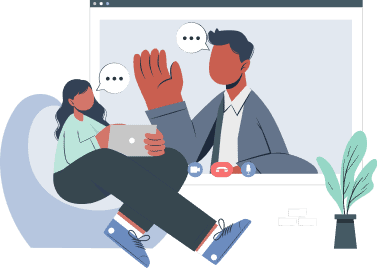What Are Controlled Substances?


In This Article
Controlled substances are drugs that are subject to strict government control because they may cause addiction or be misused.
The government’s control impacted how these substances are made, used, stored, and transported.
Examples of controlled substances include:
- stimulants
- opioids
- hallucinogens
- anabolic steroids
- depressants
Controlled substances with proven medical uses, like Valium, morphine, and Ritalin, are available to the general public, but only with a prescription from an accredited medical professional.
Other controlled substances like LSD and heroin have no medical applications and are illegal in the United States.
What is the Purpose of the Controlled Substances Act?
The controlled substances act is a legal framework that defines federal drug policy in the United States. It governs the manufacture, importation, possession, and distribution of controlled substances.
The purpose of the controlled substances act is to enhance controlled substance regulation. To this end, distributors, manufacturers, and dispensers of controlled substances must register with the Drug Enforcement Administration, a body responsible for enforcing the Act at the federal level.
This requirement has facilitated the emergence of a closed distribution system. It allows for controlled substances to be monitored from initial manufacture to the point of purchase.
How are controlled substances classified?
Controlled substances are grouped into five categories (also known as schedules) depending on their medical uses and ability to lead to abuse or dependency.3
The abuse rate has a significant impact on a drug's scheduling. For instance, schedule 1 drugs are the most likely to be abused. They also have the highest potential to cause severe physical or psychological dependence.
Note:
(a) The potential for a controlled substance to cause the effects mentioned above reduces with each increase in schedule number. For example, level 1 drugs are more likely to cause addiction and abuse than level 2 drugs, and so on.
(b) Substances may be controlled even when they do not appear on the scheduled substances list. This applies if they are intended for human consumption and are pharmacologically or structurally similar to or presented as similar to schedule 1 or schedule 2 substances.
Schedule I
Schedule I substances, drugs, or chemicals are defined as chemical compounds without any accepted medical applications and a high potential for abuse. Some examples of schedule 1 drugs include LSD, heroin, peyote, marijuana, and methaqualone.
Schedule II
Schedule II drugs have some medical applications but also possess a high potential for abuse and may cause significant physical or psychological dependence.
Examples of schedule II drugs include:
- Cocaine
- Methadone
- Methamphetamine
- Meperidine
- Dexedrine
- Adderall
- Fentanyl
- Combination products with fewer than 15 milligrams of hydrocodone per dosage unit
Schedule III
These drugs are defined as having a low-moderate potential for causing psychological and physical dependence. Schedule III drugs are less potent than schedule I and II drugs but still more dangerous than schedule IV.
Schedule III drugs include testosterone, ketamine, and anabolic steroids.
Schedule IV
Schedule IV drugs have a low potential for abuse compared to the drugs or substances in schedule III. They are also accepted for medical use in the United States.
Schedule V
These are the least dangerous of all controlled substances. They have the following characteristics:
- Limited potential for abuse compared to schedule 4 substances
- The substance has medical applications and uses in the United States
- Abusing the drug may result in limited physical or psychological dependence compared to the drugs or substances in schedule IV
Sponsored
Online Therapy Can Help
Over 3 million people use BetterHelp. Their services are:
- Professional and effective
- Affordable and convenient
- Personalized and discreet
- Easy to start
Answer a few questions to get started

List of Controlled Substances
The complete list of controlled substances in the United States is too broad to cover in this article. You can find the complete list of all controlled chemicals, drugs, and substances on the Drug Enforcement Agency website.
Sponsored
Get Professional Help
BetterHelp can connect you to an addiction and mental health counselor.
Answer a few questions to get started

What Drugs Have the Highest Potential for Abuse?
Schedule I and II drugs have the highest potential for abuse. The substances listed under these categories have the greatest potential to cause psychological or physical dependence.
What Drugs Have the Lowest Potential for Abuse?
Schedule 5 drugs have the least potential for abuse. They are also the least regulated of all scheduled substances.
Is Alcohol a Controlled Substance?
Alcohol may be illegal for individuals under the age of 21 but it is not scheduled. This is because it is not considered a controlled substance.
According to a section of the controlled substance act, the term "controlled substance" does not apply to malt beverages, spirits, wines or tobacco, as those terms are used in subtitle E of the Internal Revenue Code of 1986.1
Sponsored
Phone, Video, or Live-Chat Support
BetterHelp provides therapy in a way that works for YOU. Fill out the questionnaire, get matched, begin therapy.
Answer a few questions to get started

Treatment Options for Substance Use Disorder (SUD)
There is no cure for substance use disorder (SUD). However, there are several treatment approaches that can help the affected person overcome it and remain drug-free. The strategy used depends on the drug used and any co-occurring mental health disorders.2
These include:
- Detoxification
- Chemical dependence treatment
- Behavior therapy
What's Next?
Sponsored
Get matched with an affordable mental health counselor
Find a TherapistAnswer a few questions to get started

- “21 U.S. Code § 802 - Definitions.” Cornell Law School.
- "Behavioral Health treatments and services." Substance Abuse and Mental Health Services Administration.
- "Drug scheduling." United States Drug Enforcement Administration.







